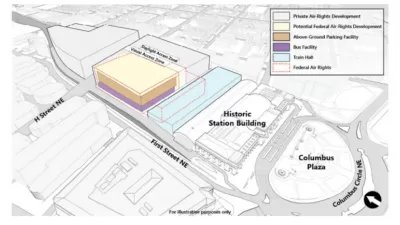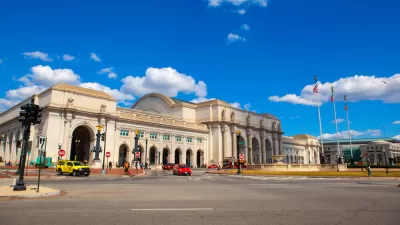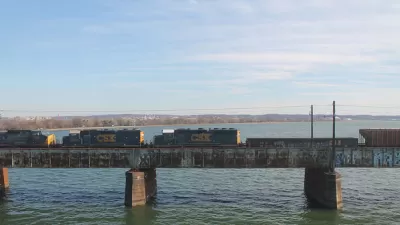Criticisms of a draft plan to revamp D.C.'s Union Station have described the proposal as far too concerned with car storage.

Following controversy this summer about the proposal to revamp Union Station in Washington, D.C., the team behind the revamp has offered a new vision for the project, one more focused on people, placemaking, and transit, than car parking.
According to an article by George Kevin Jordan, "Akridge, the company that owns the air rights above rail tracks, and oversees Burnham Place, a sibling development project at Union Station, has offered up some new renderings and a video offering an alternative vision of the renovation project."
The controversy created by the number of parking spots included in the proposed redesign created news in July, but the earlier iteration's treatment of car pick up and drop off and the station's bus station have also faced fierce debate, according to the article. The concerns about the previous design were enough to compel D.C. Andrew Trueblood, director of D.C.’s Office of Planning, to release a statement criticizing the proposed designs.
Jordan provides a lot of detail about how the new designs have revised the previous designs, breaking down how the new designs address each of the areas listed above to make Union Station both a place for millions of people to pass through efficiently (100,000 people use the station every day, according to the article), but also to create a sense of place at the station that makes people want to stay a little while.
The Draft Environmental Impact Statement (DEIS) for the Washington Union Station Expansion Project, created by the Federal Rail Administration (FRA), is available for public review and comment until September 28.
FULL STORY: New renderings offer a revamped vision of a Union Station designed for people, placemaking, and transit

Trump Administration Could Effectively End Housing Voucher Program
Federal officials are eyeing major cuts to the Section 8 program that helps millions of low-income households pay rent.

Planetizen Federal Action Tracker
A weekly monitor of how Trump’s orders and actions are impacting planners and planning in America.

Ken Jennings Launches Transit Web Series
The Jeopardy champ wants you to ride public transit.

Opinion: Transit Agencies Must View Service Cuts as Last Resort
Reducing service could cripple transit systems by pushing more riders to consider car ownership, making future recovery even less certain.

‘Smart Surfaces’ Policy Guide Offers Advice for Building and Maintaining Urban Tree Canopies
Healthy, robust tree canopies can reduce the impacts of extreme heat and improve air quality.

New Jersey Lawsuit Targets Rent-Setting Algorithms
The state of New Jersey is taking legal action against landlords and companies that engage in what the state’s Attorney General alleges is illegal rent fixing.
Urban Design for Planners 1: Software Tools
This six-course series explores essential urban design concepts using open source software and equips planners with the tools they need to participate fully in the urban design process.
Planning for Universal Design
Learn the tools for implementing Universal Design in planning regulations.
Heyer Gruel & Associates PA
Ada County Highway District
Institute for Housing and Urban Development Studies (IHS)
City of Grandview
Harvard GSD Executive Education
Toledo-Lucas County Plan Commissions
Salt Lake City
NYU Wagner Graduate School of Public Service





























